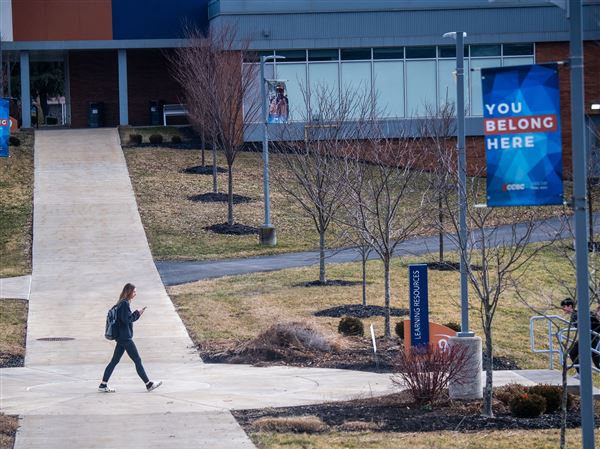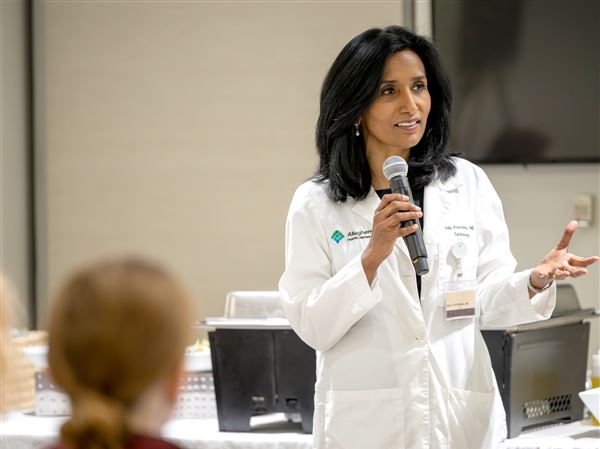The tech meltdown affecting computer jobs as well as stock prices, and the stories about off-shoring of programming jobs, have caused a decline in computer science enrollments at colleges and universities across the country. This wouldn't happen if people understood the real goals of computer science.
It's not just about money. Portraying computer science as a path to getting rich is wrong and contributes to the boom-bust pattern. There was also a boom and bust in the 1980s following the introduction of the IBM PC. At first people thought PCs would give everyone a job; then they found out hard work was involved.
In fact, the vocational nature of computer science reduces its appeal to many students. Contrast what computer careers seem to offer with the promise of the traditional sciences that offer intellectual grandeur and the opportunity for a rewarding career that helps humanity. Since 1990, the number of undergraduate degrees awarded in the biological sciences has increased 70 percent. During the same period, the number of computer science degrees awarded each year has dropped by 10 percent. Today, we are producing about 25,000 computer science bachelor's degrees annually. The life sciences produce six times as many.
The current approaches to computer science education fail to teach the science of computing. As a result, they fail to inspire the very best and brightest young minds to enter the field.
Computer science is faced with scientific challenges that rival any in history, yet are relevant to practical problems of today. Computer science involves questions that have the potential to change how we view the world.
For example: What is the nature of intelligence, and can we reproduce it in a machine? To further explore outer space, we must create intelligent robots that can act for long periods without human intervention.
Or, how can one predict the performance of a complex system? Computer systems are some of the most complex things that humans have created. Their behavior can be as surprising as such things as the U.S. economy or the weather.
Or, what is the nature of human cognition, and how can this allow us to design machines that help us make sense out of the billions of megabytes of data on the Internet? The current method of using Google and clicking around is limited by the speed of human thought.
Or, does the natural world "compute"? The workings of DNA and biological cells can be viewed as information processes. Can there be a computer based on quantum effects?
Questions such as these seem to be esoteric when placed next to the practical needs. But their answers are likely to have profound social and economic impacts.
Indeed, it is this interplay between such fundamental challenges and the human condition that makes computer science so interesting. The results from even the most esoteric computer science research programs often have widespread practical impact. Computer security depends upon the innovations in mathematics. Your Google search for a friend depends on state-of-the-art distributed computing systems, algorithms and artificial intelligence.
Computational methods are transforming an amazingly wide range of scientific, business and artistic practices. Computer science enables science to be both fundamental and practical at the same time.
Computer science education is not just training for the computer industry. A computer science program is a great preparation for many careers: business, law, medicine, biology -- any field touched by computing. Pittsburgh's most famous hip doctor, Tony DiGioia, began in computing at Carnegie Mellon.
Just as brilliant liberal arts students major in English before settling into a career, many students should start with computing as the focus of a "liberal science" education. Computer science education explains how computers work from the atoms up to the Internet; but that is not all. It teaches many other things.
How does one make something work in the desert? Our modern world is complex and messy. To be effective, a person needs to be her own engineer, knowing how to fiddle with technology under adverse conditions.
What's really going on? The methods of empirical science are a crucial component of an education. The ability to discern a real phenomenon and distinguish it from myth or opinion is vital. The study of human-computer interaction can teach experimental technique.
How does computing fit into the world? The computer is becoming the interface between people and their world. Computer scientists must know enough history and social science to chart and predict the impact of computers on the intersecting worlds of work, entertainment and society. To do this, they must understand the modern world and its roots. To participate in today's debates about privacy, one must understand both computers and society.
Some computer science should be taught long before college. Because computing is a very new science, it has not trickled down to its proper educational level. In high school, it is second-class compared with biology, physics and chemistry. In major high school science competitions, such as the Siemens-Westinghouse Science and Technology Competition, the numbers of computer science entrants in regional and national finals are dwindling as projects in biology and physics drown them out.
What passes for computer science in the high school curriculum is just training in computer programming that does not teach the visions and grand challenges of computer science. Computer science is not about a device but about ideas crucial to the next millennium.
As programmed digital devices continue to shrink in size and cost, the computer per se will disappear, just as the electric motor disappeared into hundreds of niches in our homes and automobiles. But the science will only grow in importance.
First Published: July 4, 2004, 4:00 a.m.















